To someone standing outside, looking in – a baseball bat is nothing but a simple tool. But ask any serious ballplayer, and you’ll know that their bat is no less than an extension of their personality.
That is why whenever a player needs a new baseball bat, it’s the start of a whole new battle hashing out every little detail of the new bat they are planning to buy. Now one of the critical pieces of detail you need to consider, at least when you’re buying a metal bat, is One-Piece vs. Two-Piece Baseball Bats which one to go for?
This is a question that’s been raging for decades. There are many who claim that a one-piece bat is the only way to go. While others may vouch for two-piece bats, claiming it offers a better balance of power and speed. It’s easy to get caught in the middle of all these arguments, but the question remains – which one is better?
That is exactly what I want to explore today. In this article, I will highlight the pros and cons of both designs and help you understand the key differences between a one-piece and a two-piece baseball bat to make your choice a bit easier. So, let’s hop in.
Table of Contents
One-Piece vs. Two-Piece Baseball Bats: Key Differences
When it comes to baseball bats, it’s easy to overlook the differences between a one-piece and a two-piece design. After all, both are just tools for hitting the ball, right? Well, yes – but that would be oversimplifying it.
As someone who’s used both types of bats in the past, I’ll admit that I didn’t give them much thought, either. But upon closer inspection, I noticed how miles apart the two bats really are.
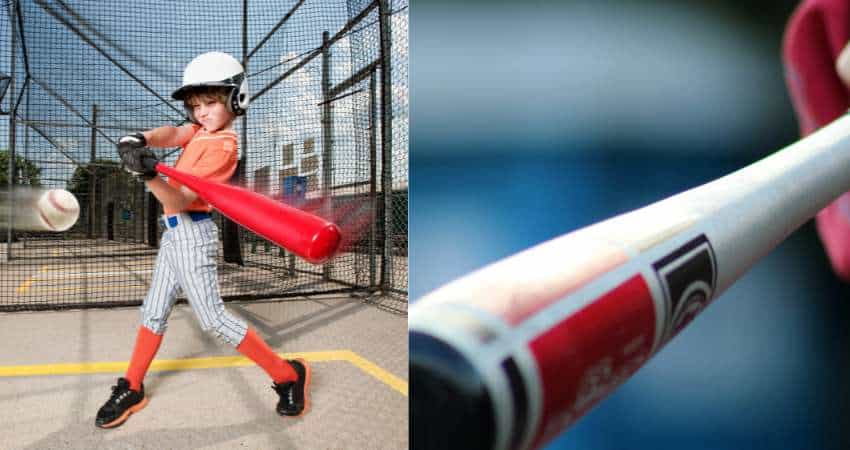
I found that there is actually a lot to talk about. So let me explain the key differences between them to help you determine which bat type you might prefer between the two.
TLDR; Here’s a chart to give you a general idea of what’s to come in the comparison between the two bat types. If you don’t have the time to shift through the entire article, a quick glance at the chart should tell you all you need to know about the difference between a one-piece and a two-piece bat.
| Key Differences | One-Piece Bat | Two-Piece Bat |
| Construction | Made from a single piece of material | Made from two separate pieces that are fused together |
| Stiffness | Stiffer and more rigid | More flexible and forgiving |
| Power | Better for generating power and driving the ball further | Can provide a balance of power and speed |
| Vibration | More likely to transmit vibrations to the hands | Less likely to transmit vibrations to the hands |
| Feel | Offers a more solid, traditional feel | Can feel lighter and easier to swing |
| Comfort | Considered less comfortable due to vibrations | More comfortable due to increased flex |
| Price | Less expensive as it uses fewer materials | Relatively more expensive as it uses additional materials |
· Construction Design
The first key difference between the two types of bats is how they are made. A one-piece bat is made with a single piece of wood, metal, or composite that’s cut down to shape and molded to perfection. There are no connection points in a one-piece baseball bat.
On the other hand, with a two-piece bat, the manufacturers use two-separate pieces of materials and fuse them together. As a result, there’s a connection point where the two parts of the bat join. The combination of materials can be different. For instance, a composite handle and an aluminum barrel is a popular combination.
· Stiffness
You will also notice a drastic difference between a one-piece and a two-piece baseball bat when it comes to its stiffness. This has everything to do with the construction of the bat, but since it impacts your gameplay pretty significantly, it deserves a mention in this comparison.
A one-piece baseball bat generally feels more rigid and has less flex to it. On the other hand, since there are two separate parts in a two-piece baseball bat, it feels pretty flexible. And as a result, a two-piece bat is more forgiving than a one-piece bat.
· Swing Speed
What good is a baseball bat if it weighs a ton? You won’t be able to swing it very comfortably, right? That’s why manufacturers have come up with clever solutions to cut down the weight of a bat so that players can step up to the plate and swing the bat with as little effort as possible.
With two-piece baseball bats, they took a step in the right direction. You see, the two-fold construction of these bats lets the bat-makers shave off a bit of extra weight from the bat, allowing you to get a faster swing speed. One-piece bats aren’t necessarily heavy, but they are still heavier than two-piece bats in most cases.
· Power
Speed isn’t everything and power hitters generally prefer a bat that helps them generate more power behind their swing rather than a bat that has a faster swing. Well, if that’s the case, then you might prefer the design of a one-piece baseball bat over its two-piece counterpart.
You see since it’s made of a single piece of material, it’s rigid – which, in turn, helps the bat transfer more energy to the ball on a successful connection. What that means is that the bat will be flying off to the stands if you can hit it perfectly. Two-piece bats usually lag behind a one-piece bat in terms of raw hitting power.
· Vibration Intensity
Vibration is a pretty major issue with baseball bats, so much so that there’s a name for it in the game. When you make a mishit with your bat, you will likely get an uncomfortably jarring sensation in your hand coming from your bat. This is what’s known as the bat sting.
Well, with a one-piece bat, especially any decent aluminum baseball bat, this is extremely common. However, since there’s grounding in a two-piece bat in the connection area, the vibration you would feel will be pretty minimal. In fact, you might not feel any vibration at all.
· Comfort
Comfort is a subjective thing, and I know – you are entitled to your own preferences when it comes to the type of bat you find more comfortable. So take this part of the comparison with a grain of salt. But common consensus shows that players generally find a two-piece baseball bat more comfortable to wield.
There are, of course, several valid reasons for it. A two-piece bat vibrates less, is easier to swing, and also lasts as long as a one-piece bat. So a rookie who just started out with the game will find it more comfortable to use in his games or practice sessions. A one-piece bat requires a bit more practice for you to become comfortable with it.
· Price
Price can often be the tie-breaker when you are caught between two options. And yes, you will notice some differences in pricing when you are choosing between a one-piece and a two-piece baseball bat of equal quality.
One-piece baseball bats usually cost less than two-piece baseball bats since they use fewer materials. Of course, going with a top-of-the-line, high-end baseball bat will come with a steep price tag regardless of whether it’s one-piece or two-piece. But generally speaking, one-piece bats are pretty affordable compared to two-piece options.
What is A One-piece Baseball Bat?
One-piece baseball bats are bats that are made of a single piece of material, be it wood, metal, or composite. Technically, all wooden or metal bats can be considered one-piece bats since they are usually made of a single piece of material. But composite baseball bats can feature a different material in different parts of the bat.
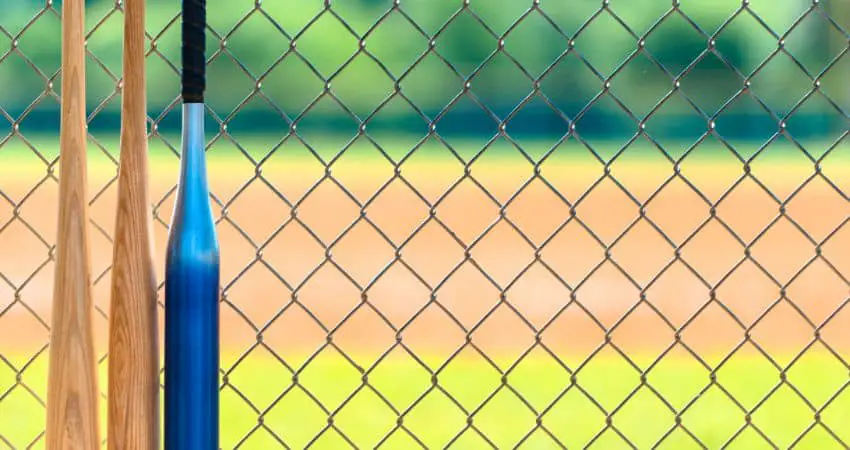
Because of the single-piece construction of a one-piece bat, they feel stiffer and have little to no flex throughout the body. And if you can’t decide between an alloy or composite baseball bat, you can get the best of both worlds with a two-piece bat. This design offers several advantages to the player but also has a few weaknesses.
What are the Advantages of a One-Piece Baseball Bat?
The single-piece design of a one-piece baseball bat offers certain benefits to the player. Here is a couple of them:
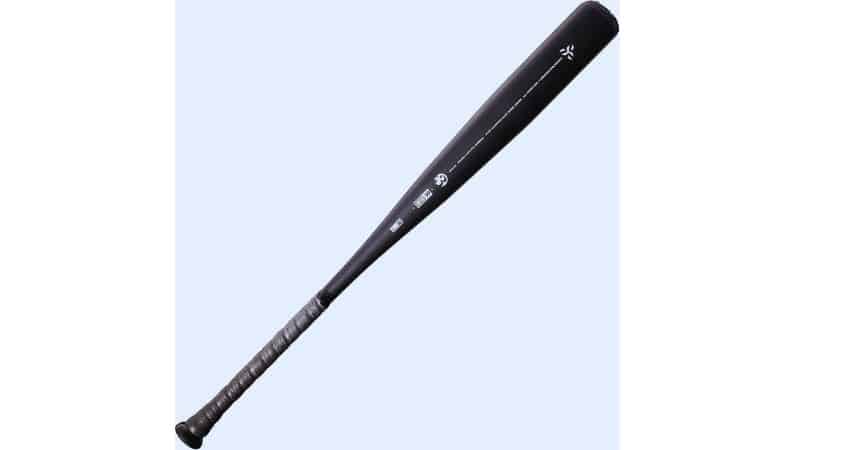
- Since a one-piece bat is rigid and doesn’t flex as much through the hitting zone, it allows you to transfer more energy to the ball on a good connection. In other words, you will be able to drive the ball further if you hit it properly.
- One-piece baseball bats also offer more feedback on a successful hit and feel extremely responsive. The moment you manage to strike the ball, you’ll feel the bat vibrate in your hands which is your cue to start running to the base.
- One-piece baseball bats require fewer materials to make. As a result, the cost of production is lower, which in turn makes the bats a bit more affordable.
Are there any Disadvantages of a One-Piece Baseball Bat?
Of course, a one-piece bat is not without its flaws. There certainly are some drawbacks that you need to be aware of when you are using a one-piece baseball bat.
- Since a one-piece bat has less flex, that means you need to put in a lot more effort to swing the bat. The swing speed of a one-piece bat is typically slower compared to two-piece options.
- The feedback of a one-piece bat is good, but to some, the vibration can seem excessive. A poorly made one-piece bat can often cause a sting because of their lack of vibration control.
What is A Two-Piece Baseball Bat?
While one-piece bats are made of a single piece of material, two-piece bats use two separate pieces of material and fuse them together. The handle and barrel of the bat are made separately. Later the two sections are joined together with a bonding agent or through welding.
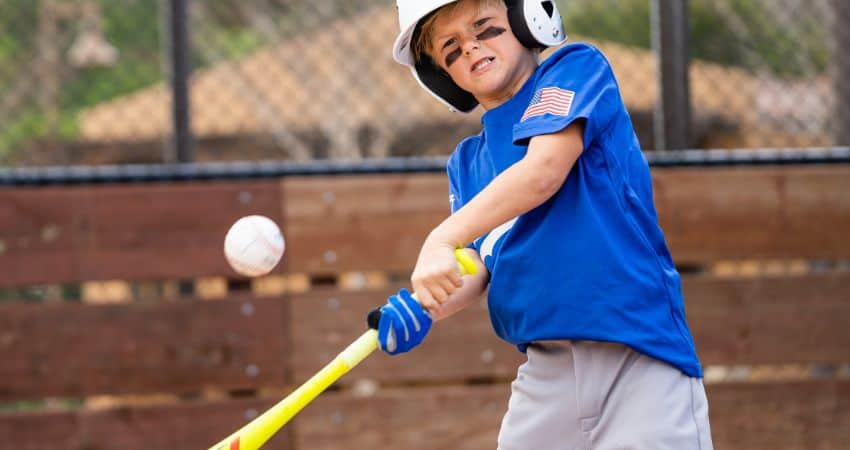
The main goal of a two-piece bat is to offer a nice balance between power and speed. Two-piece baseball bats are extremely popular because of their amazing flexibility and bat speed. And yes, it does offer some amazing advantages. But there are also a few downsides of this type of bat that you need to know about.
What are the Advantages of a Two-Piece Baseball Bat?
Two-piece baseball bats are super popular these days. And there are plenty of good reasons for it. Here are some of the benefits that you’ll get with a two-piece baseball bat
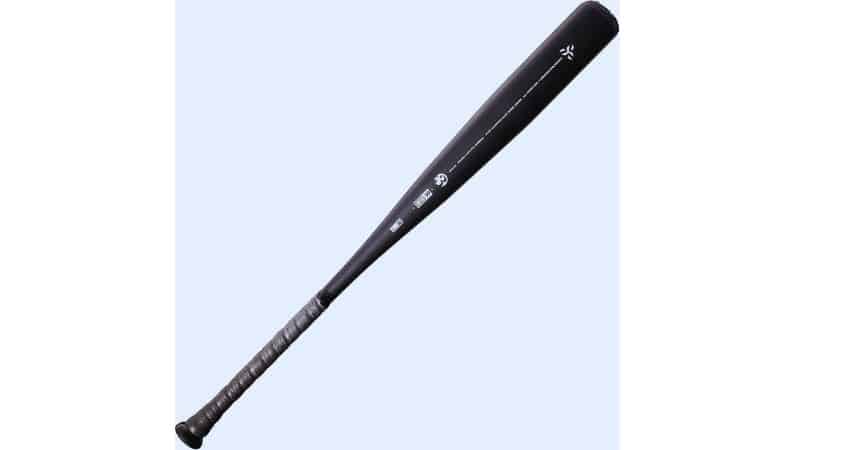
- Since a two-piece bat is made with two separate materials, it creates more flex as you swing the bat generating a whip-like effect that can help drive the ball further on a successful connection.
- With two-piece bats, manufacturers have greater flexibility in using materials that weigh less in the handle. As a result, the overall weight of the bat is usually lower, which can help you get more swing speed with your bat.
- Because of the connection between the two parts of a two-piece bat, the vibration produced at the barrel doesn’t reach the handle as much. What that means is you will not feel any sting in your hand when you make a mishit.
Are There Any Disadvantages of a Two-Piece Baseball Bat?
When talking about two-piece bats, most people would only talk about the good bits. But on close inspection, its drawbacks start becoming apparent. Here are some that you should know about.
- Two-piece bats might offer faster swing speeds, but the tradeoff here is that the power ceiling is usually lower. With a two-piece bat, you will not be able to generate as much power behind your swing.
- Two-piece bats require two separate materials to make, which can cause the production cost to hike. That’s why most two-piece bats out there are pretty expensive.
Which is Better: One-piece vs. Two-Piece Baseball Bat
If you ask around, many people will tell you that two-piece bats are better than one-piece bats. They’ll say things like it uses newer technologies or has more materials which mean it’ll perform better or last longer. However, that’s not entirely true.
Yes, two-piece bats do offer some advantages, such as giving you a faster swing speed or eliminating excessive vibration. But they also have some gaping weaknesses, such as less power generation on hit or higher prices. You can’t really ignore that.
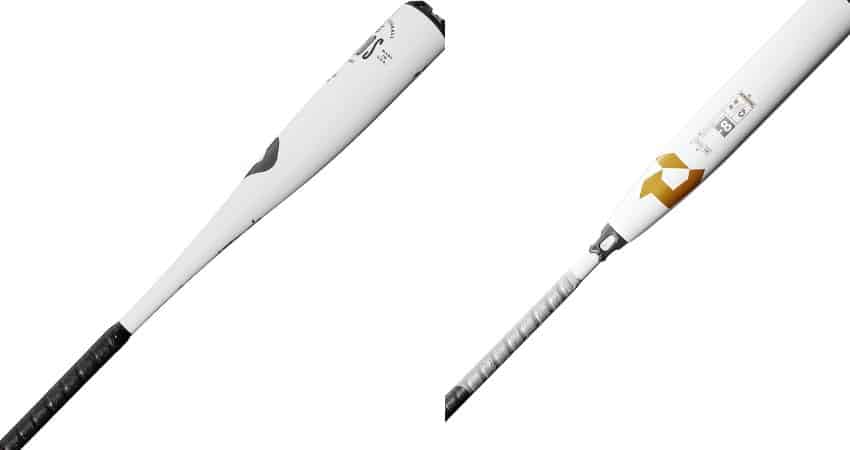
The truth is the choice of bat ultimately comes down to player preference and playstyle. The performance of a two-piece bat lies at the opposite end of the spectrum to a one-piece bat.
One-piece bats are stiffer and can deliver more power on a successful connection to the ball. This means these are the ideal weapon for power hitters. On the other hand, two-piece bats can help you swing faster and also comes with a larger sweet spot making it the more-forgiving option for hitters who contact the ball off-center.
Both types of bats have their place in the game, and you should go with one that suits your playstyle the best. There is no doubt two-piece baseball bats are extremely popular among youth and amateur baseball leagues, but one-piece bats still rule the professional scene.
Some Parting Wisdom
While there are a lot of differences between a one-piece and a two-piece baseball bat, you really shouldn’t overthink it when you are buying a new baseball bat, especially if you are just starting out. Your primary focus should go toward honing your skills and learning to connect with the ball consistently.
Yes, using the right bat for your playstyle can definitely make things easier and help you climb faster. But obsessing over a baseball bat won’t do you much good. As you can see, both one-piece and two-piece bats come with their own set of strengths and weaknesses. And you can’t really say one is better than the other.
Of course, as a veteran player, the choice of the bat becomes a lot more important. And when you reach that point in your career, you should be able to figure out which type of bat works best for you without any confusion.
In my experience, though, power hitters generally prefer a one-piece baseball bat. And contact hitters who prioritize a faster swing speed over breakneck power, like going with a two-piece baseball bat.
I hope my in-depth comparison between a one-piece and a two-piece baseball bat could help you understand what sets them apart. Cheers!
